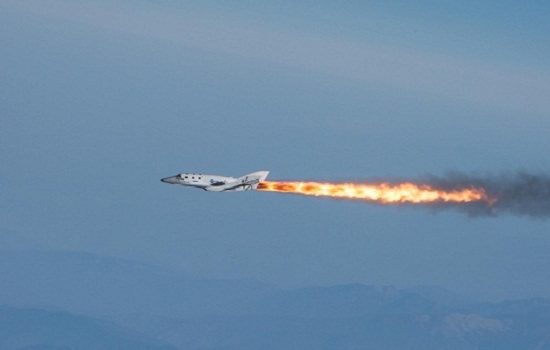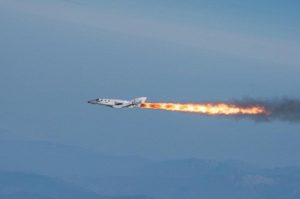
Virgin Galactic’s founder Richard Branson has intervened about the environmental impact of SpaceShipTwo from Singapore, where he was attending the international summit organized by Carbon War Room, on May 13. Carbon War Room is an environmental charity organization, founded by Branson himself with other entrepreneurs in 2009, fostering market-based incentives to reduce carbon emissions.
“We have reduced the (carbon emission) cost of somebody going into space from something like two weeks of New York’s electricity supply to less than the cost of an economy round-trip from Singapore to London,” said Branson.
SS2 successfully ignited its rocket engine breaking the sound barrier for the first time on April 29. SS2 is powered by a single hybrid engine called Rocket Motor Two, using N2O as oxidizer and a rubber compound as a solid fuel.
The exhaust products of the burnt rubber raise particular concern about the environmental impact of the motor. According to Virgin Galactic, the system is already environmentally friendly, avoiding the need of big rockets to reach suborbital altitudes. In addition, the lightweight carbon-fibre body of both launch aircraft and spaceship reduces fuel burn, and the fully reusable hybrid rocket motor employs non-toxic fuel at high altitude and with only 16 seconds of burn. However, although the rubber fuel is non-toxic, this is not true for the partially combusted products of the rubber itself as clearly showed by the black exhaust plume produced when the engine was ignited during SS2’s first powered flight. According to Doug Messier of Parabolicarc.com, although Virgin Galactic claims the sustainability of the system, it has not yet released complete data on the carbon emissions.
SS2 is designed to be launched by a transport plane WhiteKnightTwo and guided by a rocket motor before gliding back to Earth. More than 500 people have already reserved seats for a minutes-long suborbital flight that will cost $200,000. Virgin Galactic will operate just one flight per week, at least for the first year.
Below, Carbon War Room’s mission:


















































































































![A trajectory analysis that used a computational fluid dynamics approach to determine the likely position and velocity histories of the foam (Credits: NASA Ref [1] p61).](http://www.spacesafetymagazine.com/wp-content/uploads/2014/05/fluid-dynamics-trajectory-analysis-50x50.jpg)



Leave a Reply